When it comes to touring skis, finding the right weight is all about balancing efficiency on the climb with control on the descent. The sweet spot? Skis weighing 1,200–1,600 grams per ski (2.6–3.5 lbs). Lighter skis save energy on uphill stretches - every 100 grams shaved off reduces your metabolic cost by 1%. Heavier skis, on the other hand, offer more stability for tricky descents. But modern designs, like Snowfeet’s compact 100 cm WALKSKI, challenge the old rules by delivering both uphill ease and downhill reliability.
Here’s what you need to know:
- Lightweight skis (under 1,200 grams): Great for long climbs and tight terrain but may lack stability on rough descents.
- Midweight skis (1,200–1,600 grams): Strike a balance between energy savings and downhill performance.
- Heavier skis (over 1,600 grams): Provide stability on steep or choppy terrain but take a toll on your legs during ascents.
Snowfeet’s WALKSKI stands out by weighing under 1,200 grams per ski, fitting in a backpack, and working with regular winter boots - no specialized gear required. It’s a minimalist option for skiers prioritizing agility and simplicity without sacrificing control. Whether you’re tackling tight tree lines or steep backcountry slopes, this setup makes skiing less exhausting and more enjoyable.
In short, the right ski weight depends on your priorities: lighter for uphill efficiency, heavier for downhill control, or a mix of both. Snowfeet offers a fresh take with a lightweight, portable design that makes backcountry skiing more accessible and fun.
How to Choose Alpine Touring Skis
How Ski Weight Affects Speed and Stability
When it comes to ski weight, the physics are pretty straightforward: lighter skis make climbing easier, while heavier skis tend to feel more stable on the way down. But with modern ski designs, the balance between weight and stability has become more intricate than it used to be.
Take ultra-light skis (weighing less than 3.5 lbs per ski) compared to race skis (over 5 lbs per ski). The energy difference is huge, especially on long tours. Lighter skis save you energy, meaning you might have enough left in the tank for multiple runs instead of being wiped out after just one ascent. This trade-off is at the heart of why modern designs, like Snowfeet*, perform so well on both climbs and descents.
Brands like Atomic and Head have built their reputations on skis that prioritize stability, often offering touring models in the "normal" to "beefy" weight range (4–5 lbs per ski without bindings). While these skis handle steep, aggressive descents with ease, they come with a hefty uphill energy cost - something many skiers today are looking to avoid.
Lightweight Skis for Better Agility and Climbs
Here’s a fun fact: for every 100 grams you shave off your skis, you reduce your metabolic cost by about 1%. Over a full day of touring, that small savings can really add up, leaving you less fatigued and more ready to enjoy the downhill.
Lightweight skis - under 5.5 lbs per pair - are a game-changer for uphill performance. After climbing a few hundred vertical feet, you’ll feel the difference in your legs. Traditional touring skis from brands like Rossignol or Elan can feel heavy and clunky by comparison, while lighter options help you maintain a more natural and efficient stride.
Lighter skis also shine in backcountry terrain. They’re easier to carry and maneuver, which is a big deal when you’re navigating tight trees, quick turns, or rocky patches. This is where Snowfeet* stands out. Their 100 cm WALKSKI design offers incredible agility and feels more like snowshoes than traditional skis.
Shorter skis, like those from Snowfeet*, also require less effort to control. Research shows that this reduces fatigue throughout your tour. With designs like these, you get the best of both worlds: efficient climbing and controlled descents.
Heavier Skis for Stability on Descents
While lightweight skis are fantastic for ascents, heavier models have their own perks, especially when heading downhill. They handle choppy snow better and give you a more stable, confident ride off-trail. On steep, variable terrain, the added weight helps maintain momentum and control.
Heavier skis also reduce chatter on hard-packed surfaces. They feel more planted during turns, which is a big plus for skiers tackling aggressive descents. For those willing to trade some uphill efficiency for downhill stability, skis in the 5.5–6.6 lbs range per pair could be a great fit.
That said, modern ski designs are shaking up the old notion that you have to sacrifice climbing ease for descending power. Lightweight skis are now so advanced that their benefits on ascents often outweigh the minor stability gains of heavier models. Snowfeet* is a perfect example of this evolution, offering a design that balances agility and control without the traditional weight penalty.
In short, innovative designs like Snowfeet* are rewriting the rules, letting you enjoy the climb and the descent without compromise.
The Best Weight Range for Touring Skis
What's the Best Weight for Touring Skis?
When it comes to touring skis, the sweet spot for weight is between 1,200 and 1,600 grams per ski (about 2.6 to 3.5 lbs). This range strikes a balance: light enough for efficient uphill climbs, but still hefty enough to give you stability on the way down. For comparison, resort skis tend to be much heavier - often over 2,000 grams. For example, the Rossignol Black Ops 98 weighs in at approximately 1,972 grams, while the Atomic Backland 102 tips the scales at a hefty 2,824 grams.
If you're looking for something ultralight, skis under 1,200 grams are ideal for long tours. On the flip side, skis weighing more than 1,600 grams might feel heavy for backcountry use but could work for those who prioritize downhill performance. Your fitness level plays a big role here. If you're covering long distances or climbing steep terrain, lighter skis can make a huge difference. Meanwhile, stronger skiers might not mind the added weight and could even appreciate the extra stability. The type of terrain you're tackling also matters - lighter skis are usually best for backcountry adventures.
Why Snowfeet* Skis Work Great for Touring
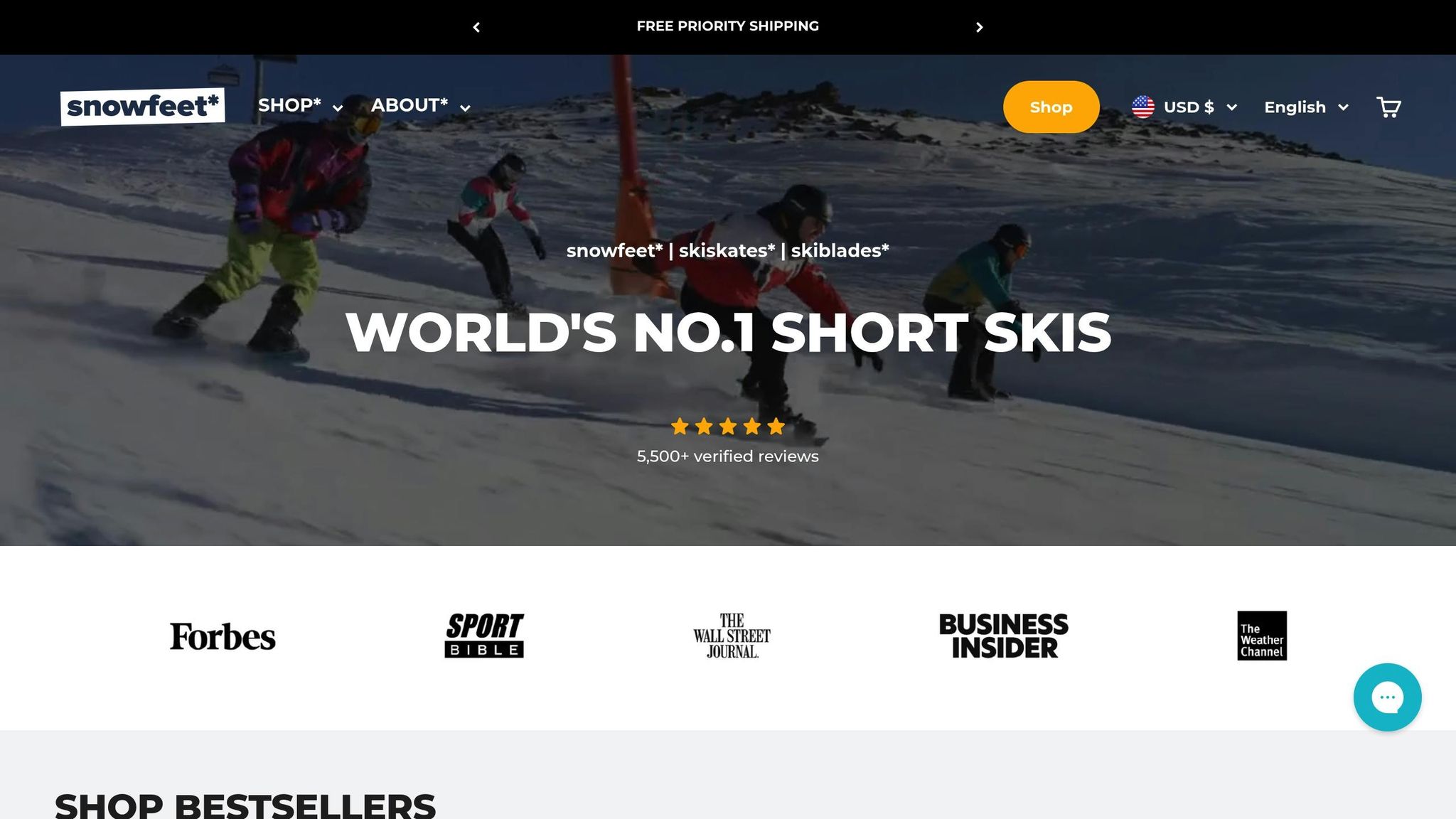
Snowfeet* has stepped up to meet these weight needs, combining ultralight construction with practical performance. Their WALKSKI Backcountry Touring Skis (100 cm) are a game-changer. At just a fraction of the weight of traditional touring skis - often over 2,000 grams - these skis make long ascents easier and are compact enough to fit in a backpack.
Unlike brands like Head or Elan, which focus on longer, heavier skis for downhill stability, Snowfeet* takes a different approach. Their shorter skis prioritize portability and maneuverability. Plus, they’re designed to work with regular winter boots, so you can skip the bulky touring footwear. This streamlined setup - skis, boots, and bindings - keeps everything lightweight and easy to manage, making your touring experience more accessible and enjoyable.
Snowfeet* vs. Standard Touring Ski Brands
Benefits of Short and Lightweight Skis
Snowfeet* brings a fresh take to touring skis with their compact 100 cm design that’s far lighter than traditional options, which usually weigh between 1,600–2,000 grams per ski. For example, the Atomic Bent 100, often celebrated as a lightweight choice in the ski world, still towers over Snowfeet* in both size and weight.
The 100 cm Snowfeet* WALKSKI Backcountry Touring Skis stand out with a design that prioritizes simplicity and portability. Unlike standard skis from brands like Head or Elan - which often require a roof rack or bulky ski bag - Snowfeet* skis are compact enough to slip into your backpack alongside your other gear.
This shorter design isn’t just about convenience; it’s also beginner-friendly. The reduced length makes these skis easier to handle and more forgiving, which is perfect for those new to backcountry skiing or anyone who wants a hassle-free experience. Plus, they shine when it comes to agility. Studies confirm that shorter skis are better for tight turns, kick turns, and navigating dense terrain like forests or narrow trails. This makes them an excellent choice for skiers looking to explore challenging routes without the struggle of managing long, unwieldy skis.
Comparison Table: Snowfeet* vs. Standard Skis
| Feature | Snowfeet* WALKSKI (100 cm) | Atomic Bent 100 | Rossignol Black Ops 98 | Head/Elan Standard |
|---|---|---|---|---|
| Length | 100 cm | 170–180 cm | 170–188 cm | 160–180 cm |
| Weight per ski | Under 1,200 g | 1,600–1,800 g | 1,972 g | 1,800–2,200 g |
| Portability | Fits in backpack | Requires ski bag/rack | Requires ski bag/rack | Requires ski bag/rack |
| Boot compatibility | Regular winter boots | Specialized touring boots | Specialized touring boots | Specialized touring boots |
| Learning curve | Beginner-friendly | Intermediate to advanced | Intermediate to advanced | Intermediate to advanced |
| Maneuverability | Excellent in tight spaces | Good on open terrain | Good on open terrain | Moderate |
| Setup complexity | Simple | Complex bindings | Complex bindings | Complex bindings |
| Price range | $490–$690 | $600–$800+ | $700–$900+ | $650–$1,000+ |
While the Atomic Bent 100 is praised for its versatility - thanks to its 100 mm waist and performance across various conditions - it still requires specialized boots and bindings, adding to the overall complexity. Snowfeet*, on the other hand, strips away these barriers.
Traditional skis like the Atomic Bent 100 do have their strengths. Ski testers rave about their performance. Bailey Lahure, for instance, shared:
"They hold an edge, turn really well on groomers, and have a nice grabby camber underfoot that pops you in and out of your turns".
Jordan Condon also highlighted their park capabilities:
"Super fun ski to rip in the park. Nimble on rails and floaty on jumps. This ski has a light swing weight, making it easy to swap and spin onto/out of rails. They have a fun profile for pressing and nollies, even if they aren't the softest".
However, this level of performance comes with added weight and a more complicated setup. Snowfeet* takes a different approach, focusing on accessibility and ease. With no need for expensive touring boots or intricate bindings, and with a lightweight design that’s easy to carry, Snowfeet* makes backcountry skiing less about the gear and more about the experience. Whether you’re trekking uphill or cruising downhill, these skis are designed to keep things simple and fun, offering a fresh perspective for backcountry enthusiasts.
sbb-itb-17ade95
How to Choose the Right Touring Ski for Your Needs
Factors to Consider When Choosing Ski Length and Weight
Picking the right touring ski isn’t just about going for the lightest option. While minimizing weight can make a big difference in performance, other factors - like your height, skill level, and terrain preferences - play a huge role in finding the best fit. Luckily, Snowfeet* products simplify a lot of these choices.
When it comes to skill level, beginners often prefer skis that are easier to control, while advanced skiers can handle gear designed for higher speeds and smoother performance. Traditional rules for ski length vary depending on experience, but with Snowfeet* WALKSKI Backcountry Touring Skis, the 100 cm length is designed to be maneuverable for skiers of all levels.
Terrain is another major factor. Wider skis are great for deep powder but can feel heavy, while narrower ones are better for quick ascents and groomed trails. If you want a middle ground, an all-rounder model strikes a balance. Snowfeet* skis, at 100 cm, are ideal for a range of conditions, offering agility in tighter spaces without sacrificing performance.
Your priorities on the mountain matter, too. If you’re all about fast ascents and tackling lots of vertical terrain, lightweight skis are a must. On the other hand, if you’re more focused on enjoying the downhill ride, a slightly heavier ski might give you better control and stability.
Your weight and build also influence ski choice. For those who are heavier, ski faster, or carry heavy packs, traditional advice suggests opting for skis on the longer side of the recommended range. Snowfeet* simplifies this by offering a one-size-fits-most solution with their 100 cm length, which works for a variety of body types and skiing styles.
Lastly, the turning radius of skis can affect how they handle. A smaller radius is better for slower speeds, while faster skiers benefit from a larger radius for added stability. Snowfeet* skis are designed with an optimal radius, making them responsive and easy to turn at any speed.
These points highlight why Snowfeet* creates such a versatile option, offering a solution that works across a wide range of skiing demands.
Why Snowfeet* Offers the Most Flexible Options
Snowfeet* WALKSKI Backcountry Touring Skis make ski selection less complicated by providing a one-size-fits-most design that adapts to different skill levels and conditions. At 100 cm, these skis hit a sweet spot between stability and agility.
One of their standout features is terrain versatility. Whether you’re weaving through tight forest trails, gliding over open powder, or navigating mixed terrain, the shorter length makes quick direction changes a breeze. Backcountry guides often recommend shorter skis for tight spaces, and Snowfeet* fits the bill perfectly.
Boot compatibility is another game-changer. Unlike brands like Atomic or Rossignol, which require specialized touring boots, Snowfeet* works with regular winter boots. This simplifies your gear setup and saves you from investing in extra equipment.
For beginners, Snowfeet* skis offer an easier learning curve. Traditional touring skis can be tricky to master, especially in challenging terrain. Snowfeet* skis are more forgiving, helping beginners build confidence while still meeting the needs of advanced skiers.
Portability is where Snowfeet* truly shines. Traditional setups often require roof racks, ski bags, and careful transport plans. In contrast, Snowfeet* skis fit into a backpack, making spontaneous adventures and public transportation to trailheads much more convenient.
The price point is another big win. A standard touring setup from major brands can cost around $2,200, but Snowfeet* WALKSKI comes in at just $499. This makes backcountry skiing more accessible without cutting corners on quality or performance.
Maintenance is also simpler. Traditional touring bindings often need regular adjustments and professional servicing. Snowfeet* bindings are straightforward, with fewer moving parts, reducing the chance of mechanical issues when you’re out in the field.
Snowfeet* skis are also ideal for multi-activity winter adventures. You can switch seamlessly between skiing and hiking, carry them over rocky patches, or use them for short ski sections during longer trips. This flexibility fits perfectly with today’s backcountry recreation, where versatility often outweighs specialization.
The lightweight design is especially noticeable on longer tours. When you’re covering serious vertical terrain or racing against limited daylight, every ounce counts. Snowfeet* skis help you move faster and with less effort, giving you more time to enjoy the mountain. Whether you’re out for a quick adventure or a full day of exploration, these skis make it all feel easier and more fun.
The Snowfeet* Advantage: Lightweight, Portable, and Fun
Breaking the Myth of Long, Heavy Skis
Traditional long skis have long been hailed for stability, but Snowfeet* flips the script by delivering both control and portability in one sleek package. Unlike bulky skis, Snowfeet* products are lightweight and compact enough to fit in a standard backpack - perfect for those who value convenience.
The idea that longer skis are inherently more stable doesn’t always hold up. With over 5,500 verified reviews and an impressive 4.9 out of 5-star rating, users rave about the superior control and maneuverability of shorter skis. Take it from Andrew B., who shared:
"These skiblades are so much fun and easy to control. Never going back to regular skis."
This portability isn’t just about ease of transport - it’s about freedom. Whether you’re hopping on public transportation to the trailhead or planning a last-minute mountain adventure, Snowfeet* makes it all hassle-free. Plus, their intuitive design means almost anyone can jump in and enjoy the ride safely and effortlessly [31,32]. It’s a whole new way to experience winter sports.
Why Snowfeet* Is the Future of Winter Sports
Snowfeet* isn’t just a product - it’s a movement. By blending skating and skiing into an exciting hybrid sport called "skiskating", they’re challenging the norms of winter sports. Who knows? One day, we might even see skiskating at the Olympics.
Affordability is another game-changer. With prices starting at just $150 for the Mini Ski Skates and $499 for the WALKSKI Backcountry Touring Skis, Snowfeet* makes winter sports more accessible than ever. Say goodbye to the financial hurdles that often come with skiing.
Versatility is a core strength of Snowfeet*. While traditional skis are often tailored to specific conditions or skill levels, Snowfeet* products thrive everywhere - from sledding hills to snowy trails and even ski resorts. They’re compatible with any winter boots, making it easy to switch between skiing and hiking as the terrain demands.
The materials used in Snowfeet* products are another highlight. Built with fiberglass-reinforced material and adjustable bindings, they’re designed to fit most boot sizes. That means no need for pricey, specialized footwear.
Customer feedback speaks volumes about the impact Snowfeet* is having. Vanessa from the UK shared:
"Easily one of the best purchases I have ever made to date."
And Nathan F. chimed in with:
"Absolute game-changer! They're light, fast, and incredibly fun to ride."
Beyond the slopes, Snowfeet* keeps things simple. Approved for ski slopes and compatible with all types of boots, they let you hit the resort without any extra hassle. Plus, free shipping to most countries in just 3–5 business days means you can get started in no time.
But perhaps the best part? Snowfeet* turns every slope into your personal playground. Unlike traditional skis, which often limit you to specific techniques, Snowfeet* encourages creativity. Think jumps, twists, and tricks you’d never attempt with heavier, longer gear.
Their motto sums it up perfectly:
"WHO NEEDS SKIS WHEN YOU HAVE SNOWFEET?"
Conclusion: Finding the Right Balance with Snowfeet*
When it comes to touring skis, getting the right mix of weight and performance makes all the difference. You want speed and stability, but without the extra effort that can sap your energy on long treks.
Take the 100cm WALKSKI, for example. Weighing just 1.5 lbs per ski, it proves that shorter skis can pack a punch without wearing you out.
Snowfeet* has taken a fresh approach to touring skis by including built-in sealskin and a dual binding system. This combo gives you solid climbing grip and smooth transitions - plus, you don’t need special boots to use them.
And let’s talk price. At $499 for the complete WALKSKI setup, it’s a steal compared to the average $2,200 price tag for traditional ski touring gear.
Whether you're weaving through tight forest trails, scaling steep backcountry inclines, or gliding through fresh powder, Snowfeet* is ready for the challenge. They’re not just rethinking ski weight - they’re making touring more accessible, affordable, and fun. This shift might just reshape the future of touring skis.
Touring isn’t about lugging around heavy, oversized gear anymore. It’s about smarter, lighter equipment that lets you go farther, climb easier, and enjoy every snowy adventure to the fullest. With Snowfeet*, it’s all about less weight and more freedom.
FAQs
How does the weight of touring skis impact performance on different terrains?
When it comes to touring skis, weight can make or break your skiing adventure, especially when you're tackling different types of terrain. Lighter skis, like the Snowfeet* WALKSKI Backcountry Touring Skis, are a dream for uphill climbs. They help cut down on fatigue and make moving around easier, so those steep ascents feel less like a workout and more like an adventure. Plus, their shorter, lightweight build makes them super nimble, giving you better control in tight or tricky spots.
Now, if you're all about aggressive downhill runs, heavier skis - think brands like Rossignol or Atomic - are your go-to. They offer more stability and control when you're flying down the slopes. The trade-off? That extra weight can turn uphill sections into a bit of a slog. Snowfeet* finds the sweet spot here, delivering lightweight skis that are versatile and easy to manage, so your climbs and descents are equally enjoyable.
Why are Snowfeet WALKSKI touring skis better for backcountry skiing compared to traditional skis?
Why Snowfeet WALKSKI Touring Skis Are a Game-Changer
Snowfeet WALKSKI touring skis bring a fresh approach to backcountry skiing with their super lightweight and compact design. At just 100 cm long, they’re incredibly easy to carry and handle, making them perfect for navigating tight trails or tackling steep slopes. Compared to bulkier options like traditional skis from brands such as Rossignol or Atomic - which often need specialized bindings - WALKSKI offers the convenience of working with regular winter boots. No extra gear, no hassle.
Their shorter, lighter construction also makes them a dream for portability. Whether you're planning a quick outing or a multi-day trek, their design saves you from lugging around heavy equipment. This is especially great when every ounce counts on longer adventures. Plus, their versatility means both beginners and seasoned skiers can enjoy a smoother, more mobile backcountry experience - all without giving up stability or performance.
Can I use regular winter boots with Snowfeet touring skis, and will it affect performance?
Yes, you can pair your regular winter boots with Snowfeet touring skis - whether they’re waterproof boots or ones with ankle support - without losing out on performance. Unlike traditional skis that demand stiff, specialized ski boots, Snowfeet products are made to work with everyday footwear. This makes them way more convenient and easy to use.
This flexibility means you can grab your gear and head out for casual outings or quick trips without overthinking your setup. Even with regular boots, Snowfeet touring skis deliver impressive control and agility, giving you a smooth and fun ride. Thanks to their smart design, you get the performance you need without the fuss of extra-specialized equipment.














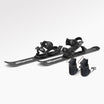






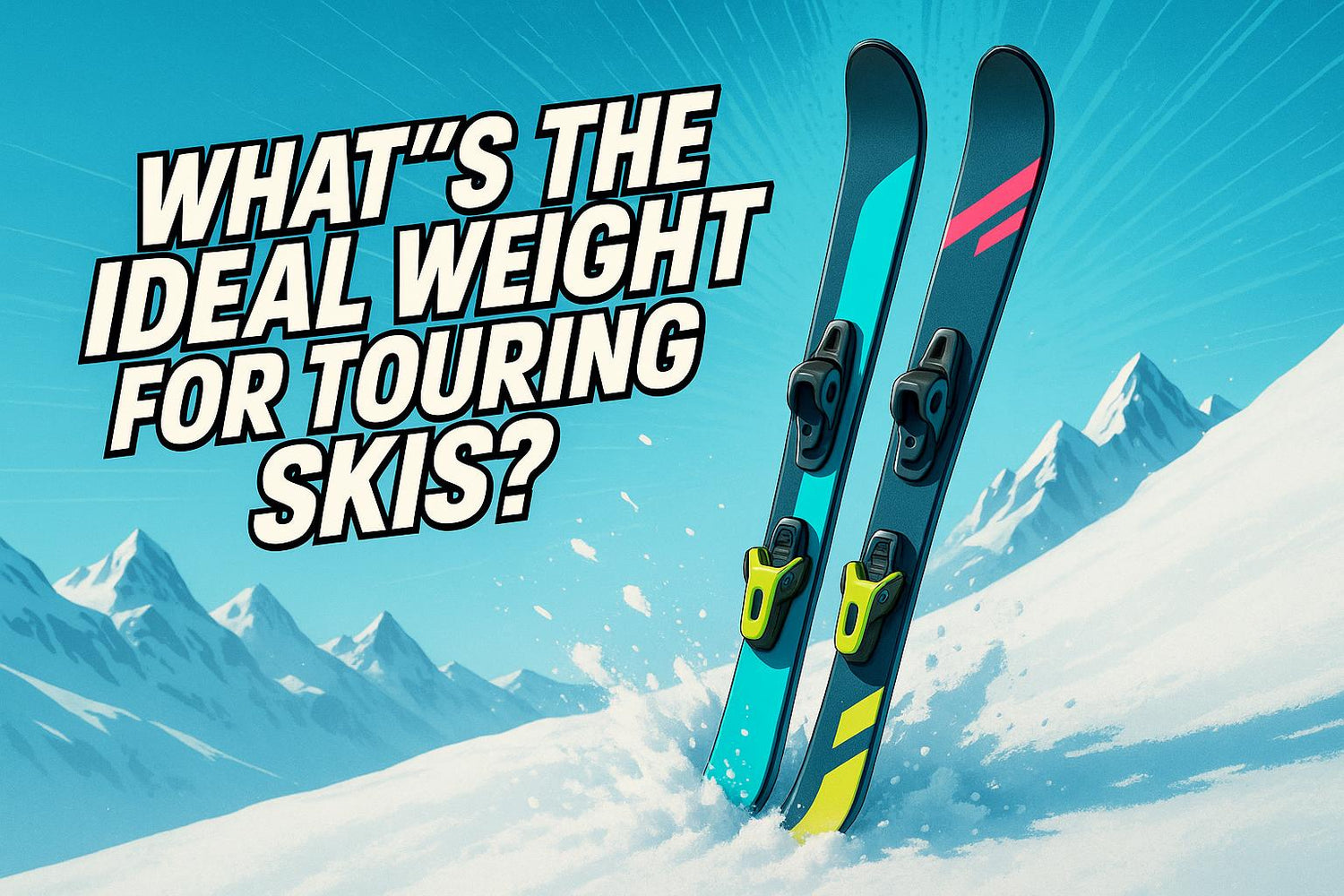
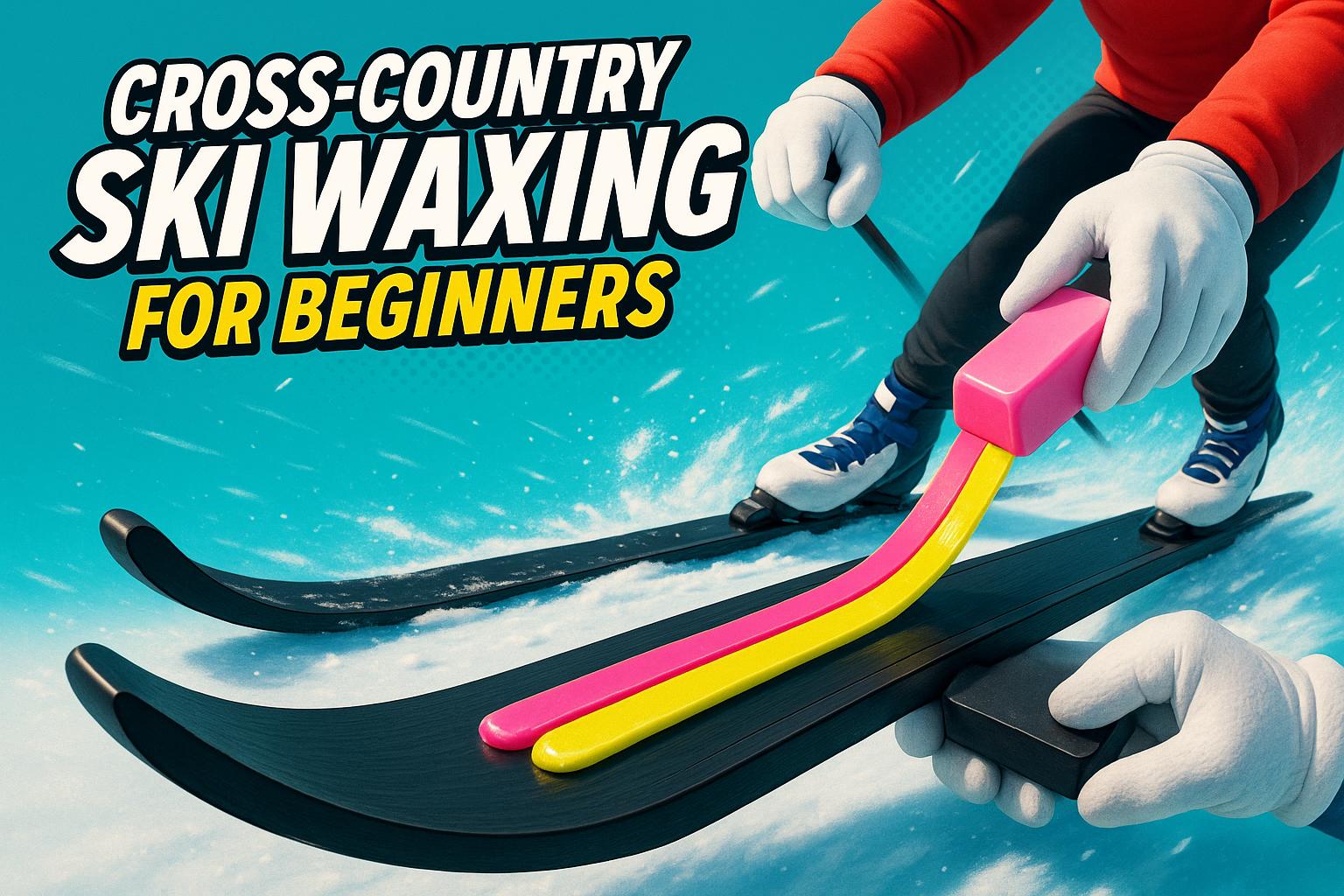
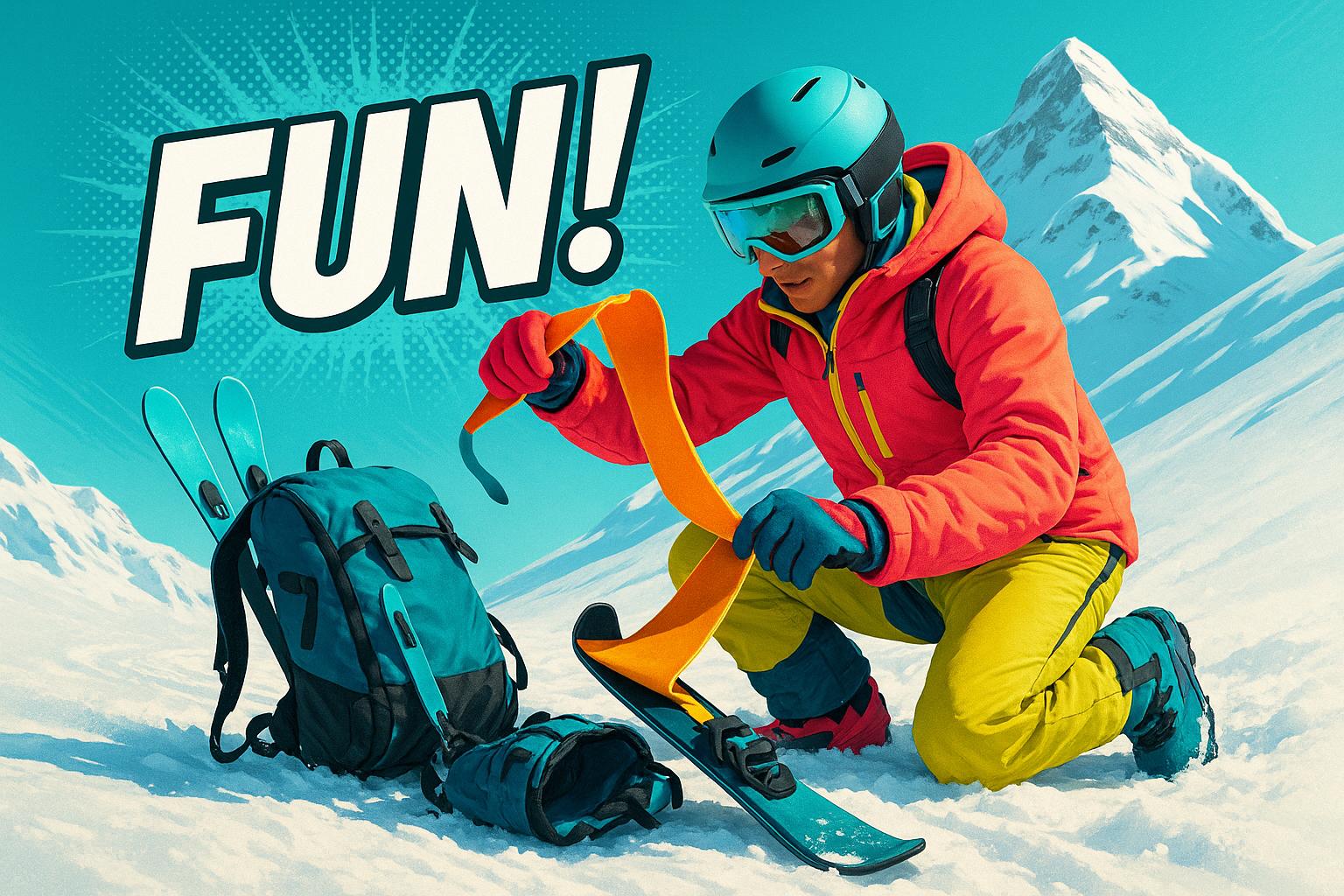







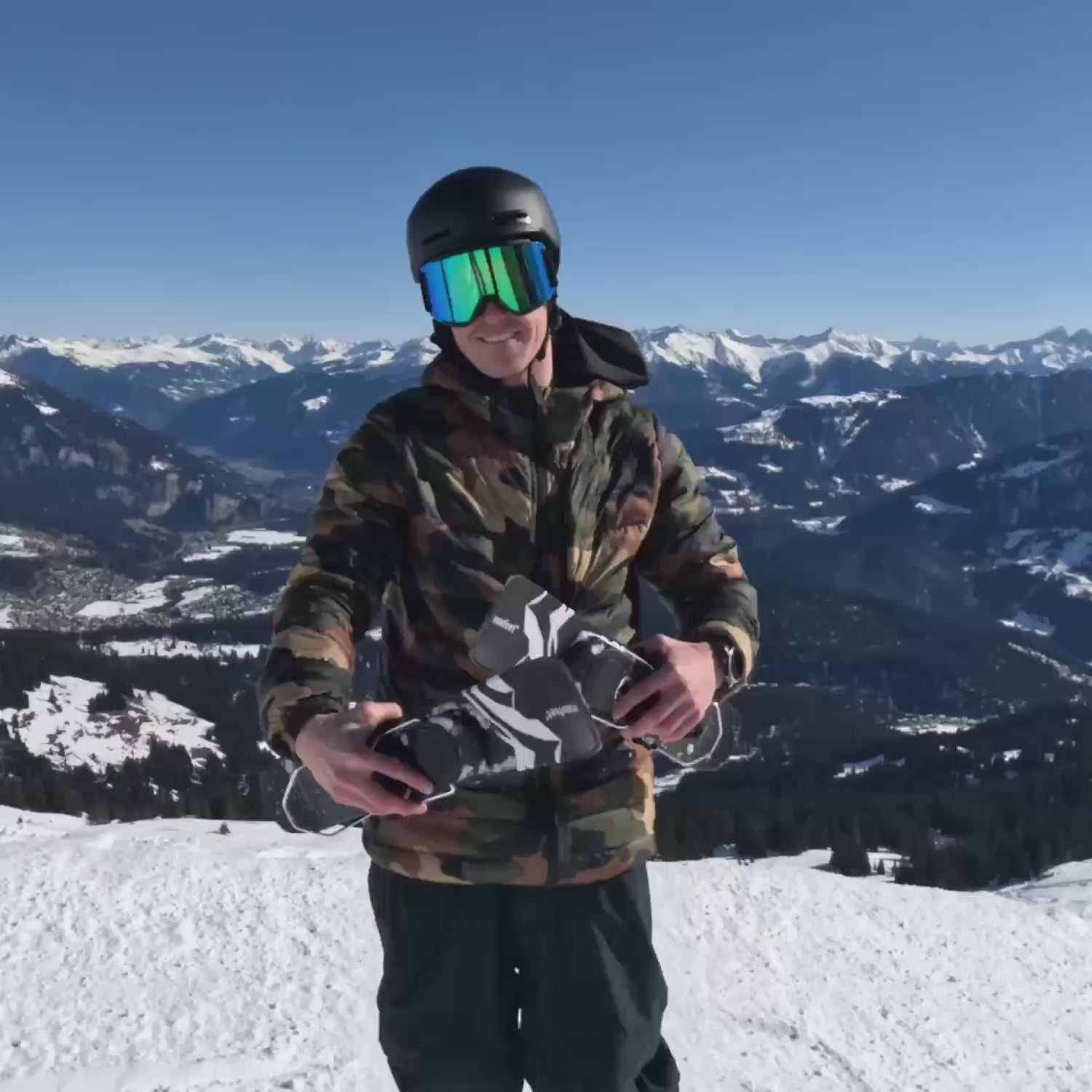

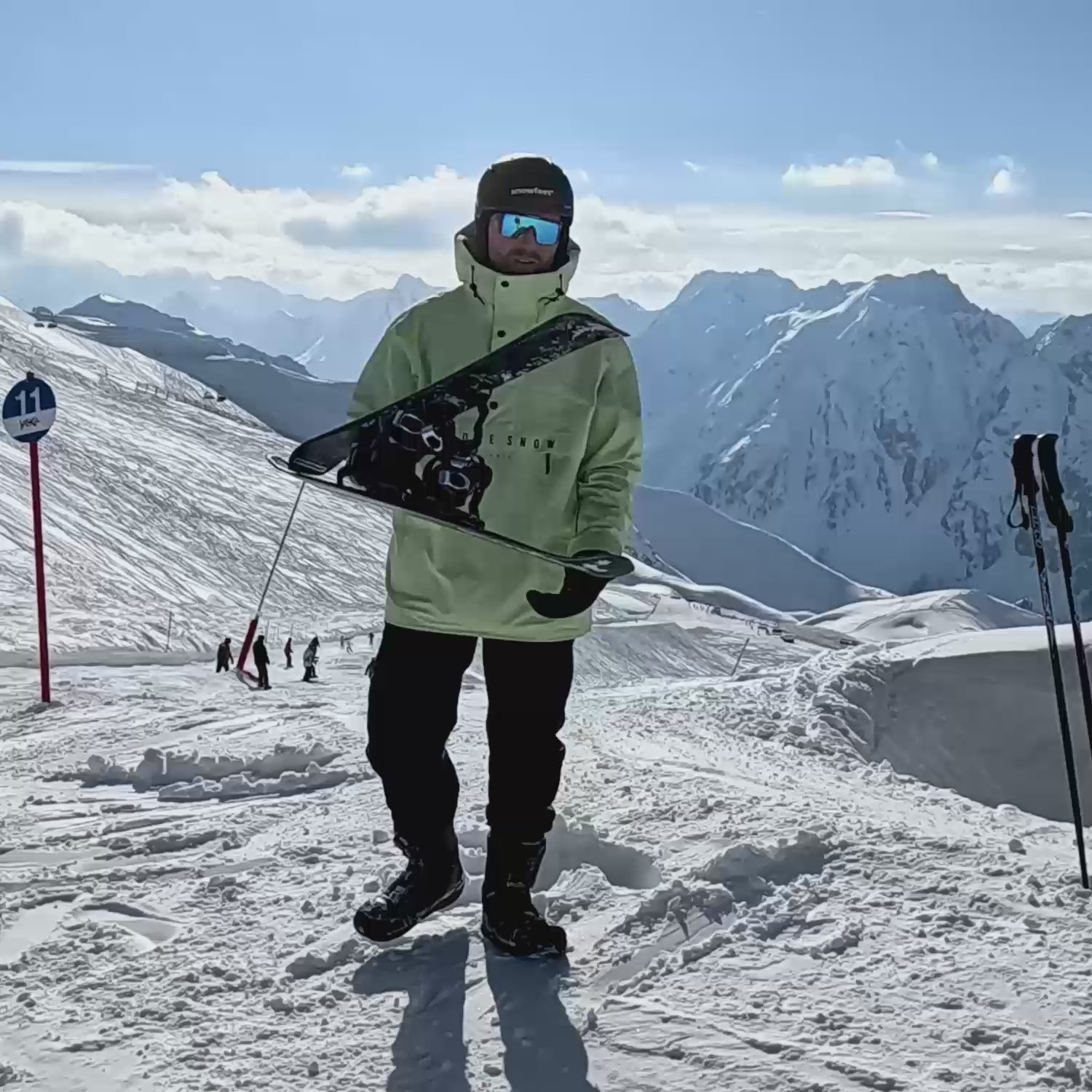
Leave a comment
This site is protected by hCaptcha and the hCaptcha Privacy Policy and Terms of Service apply.